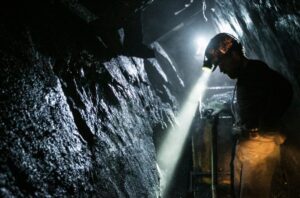Final rule also creates new program requiring metal, nonmetal operators to provide health exams at no cost to miners, similar to existing coal miners’ program

WASHINGTON – The U.S. Department of Labor announced today that its Mine Safety and Health Administration has issued a final rule to better protect the nation’s miners from health hazards associated with exposure to respirable crystalline silica, also known as silica dust or quartz dust.
The final rule lowers the permissible exposure limit of respirable crystalline silica to 50 micrograms per cubic meter of air for a full-shift exposure, calculated as an 8-hour time-weighted average. If a miner’s exposure exceeds the limit, the final rule requires mine operators to take immediate corrective actions to come into compliance.
“It is unconscionable that our nation’s miners have worked without adequate protection from silica dust despite it being a known health hazard for decades,” said Acting Secretary Julie Su. “Today, the Department of Labor has taken an important action to finally reduce miners’ exposure to toxic silica dust and protect them from suffering from preventable diseases. Mining communities across the country should know that the Biden-Harris administration is determined to do what must be done to ensure that miners come home safe and healthy at the end of every day.”
In addition to reducing exposure limits, the final rule does the following:
- Requires mine operators to use engineering controls to prevent miners’ overexposures to silica dust and use dust samplings and environmental evaluations to monitor exposures.
- Compels metal and nonmetal mine operators to establish medical surveillance programs to provide periodic health examinations at no cost to miners. The exams are similar to the medical surveillance programs available to coal miners under existing standards.
- Replaces an outdated standard for respiratory protection with a new standard reflecting the latest advances in respiratory protection and practices. This update will better protect miners against airborne hazards, including silica dust, diesel particulate matter, asbestos and other contaminants.
“This rule reducing miners’ exposures to toxic silica dust has been a long time in the making, and the nation’s miners deserve its health protections,” said Assistant Secretary for Mine Safety and Health Chris Williamson. “Congress gave MSHA the authority to regulate toxic substances to protect miners from health hazards and made clear in the Mine Act that miners’ health and safety must always be our first priority and concern. To further advance this directive, MSHA is committed to working together with everyone in the mining community to implement this rule successfully. No miner should ever have to sacrifice their health or lungs to provide for their family.”
Inhalation of respirable crystalline silica, a carcinogen, can cause serious lung and other diseases, such as silicosis, lung cancer, progressive massive fibrosis, chronic bronchitis and kidney disease. Exposure to mixed coal mine dust containing respirable crystalline silica can lead to the development of black lung disease and progressive massive fibrosis. These diseases are irreversible and can be fatal. They are also preventable.
MSHA’s final rule will improve the health and safety of U.S. miners significantly. The rule will result in an estimated total of 1,067 lifetime avoided deaths and 3,746 lifetime avoided cases of silica-related illnesses.
McCraren Compliance offers many opportunities in safety training to help circumvent accidents. Please take a moment to visit our calendar of classes to see what we can do to help your safety measures from training to consulting.
Original article published by MSHA